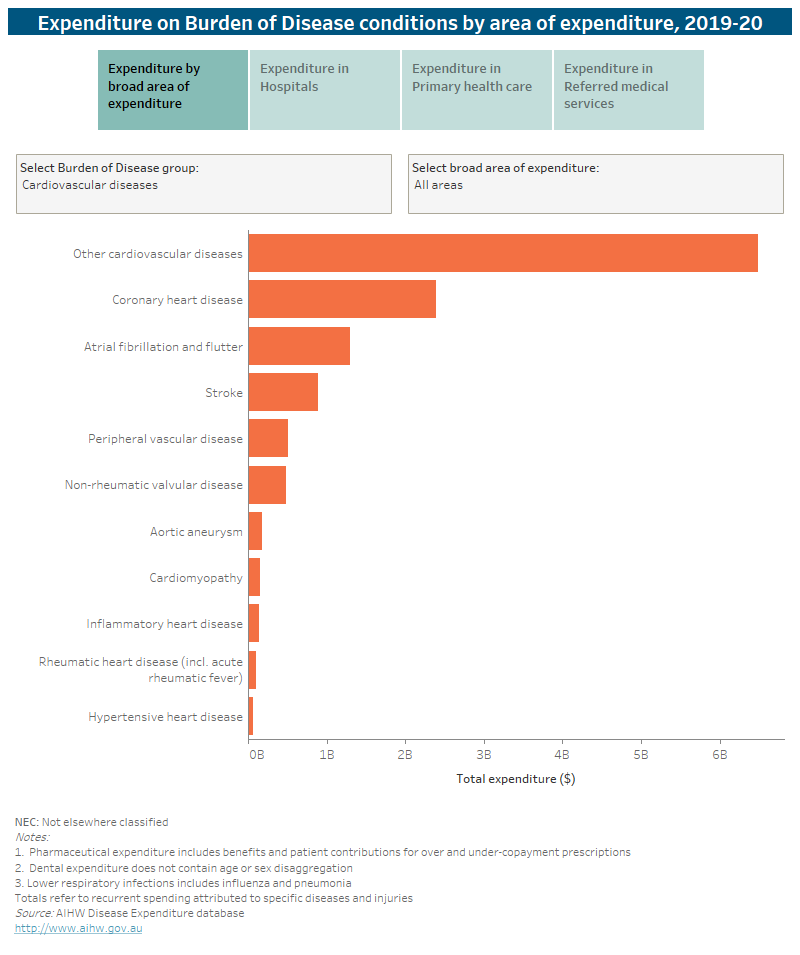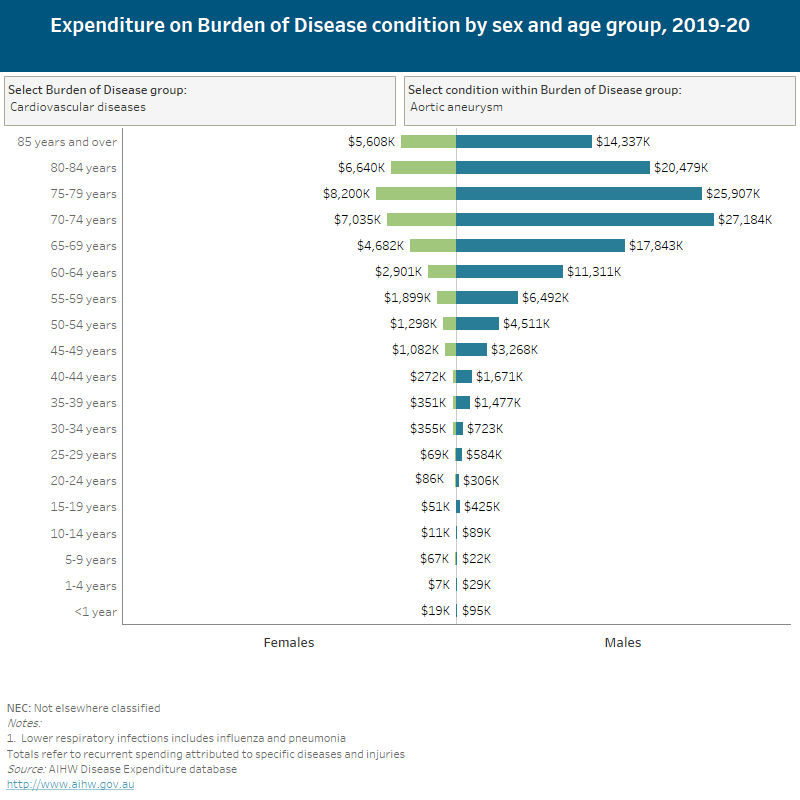Australian burden of disease conditions
The Burden of Disease conditions list contains over 200 conditions in 17 groups. Refer to Table 7 in the Excel Workbook for a mapping of all of the ABDS conditions to the 17 disease groups. Some of these conditions such as cardiovascular disease, falls and dental caries can be considered largely preventable, while other conditions aren’t preventable such as many types of cancers e.g. breast cancer, brain cancer, prostate cancer. This is not an exhaustive list of all possible health conditions and, as such, the spending associated with ‘other’ conditions within a group is relatively large. For example, spending on other maternal conditions includes costs related to healthy childbirth, which is not a health condition in the Burden of Disease list. Injury spending can be viewed in two ways, by the nature of injury (such as fractures) and the cause of injury (such as road traffic crashes).
- The spending associated with ‘other’ conditions within a disease group was the highest for other cardiovascular, other musculoskeletal, and other blood and metabolic disorders (excludes ‘not elsewhere classified’ groupings).
- The specific conditions with the highest spending were falls, dental caries, and osteoarthritis (excludes all ‘other’ conditions within groups).
- Of the estimated $140.4 billion of health spending included in this study, $183 million could be allocated by age group and sex to the treatment and management of COVID–19 within the hospital setting or pathology testing specifically for COVID–19. Refer to the COVID–19 section within this web report for further information on COVID–19 spending.
The following interactive data visualisation can be used to display spending on conditions within disease groups for each area of expenditure. Data used to create the visualisations can also be downloaded as an Excel workbook.
|
This visualisation shows expenditure at a more granular level, showing spending by area of expenditure for conditions that are part of each burden of disease group. Injuries where the external cause was Falls were responsible for the highest spending amongst all specific conditions ($4.7 billion). Considering Cancer and other neoplasms as a group, Non-melanoma skin cancer was the condition with the highest spending in referred medical service settings. |

Spending on conditions varies by sex
- For females, spending was highest on other maternal conditions, other cardiovascular diseases, and other musculoskeletal conditions. For specific conditions, the highest were falls, osteoarthritis, and back pain and problems.
- For males, spending was highest on other cardiovascular diseases, other musculoskeletal conditions, and other injuries. For specific conditions, the highest were injuries caused by falls, coronary heart disease, and osteoarthritis.
Dental expenditure is not currently able to be reported by age and sex, except when provided through the MBS or as part of a public or private hospital admission. This ranking of conditions for sexes therefore excludes the bulk of dental expenditure.
The following interactive data visualisation can be used to display spending on a condition within a disease group by age group and sex. Data used to create the visualisation can also be downloaded as an Excel workbook.
|



